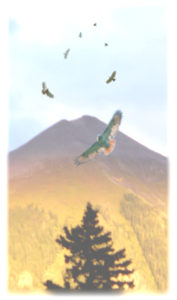In peace we remember who we are, and from peace we can ask the questions that strike more closely to the heart, and we can become patient and quiet enough to become the answer.
There’s true magic in each one of us, and I honor and support the regions of the heart that choose for loving, no matter what.
– Woo Du-An
I’ve discovered a way of working with people that deeply pleases my soul.
My primary purpose in life is to help people love themselves… Life can be hard enough without piling on the additional suffering when we’re being harsh and merciless to ourselves. I know because I’ve been there – when my survival brain hijacks me and I become a predator, mostly to myself.
When the difficult circumstances we are encountering are still unresolved the one thing we need to have within us is our love, our self-compassion, our grit; resources that can provide a sense of safety inside even when there is not safety externally. It pays to steer our attention to self-compassion and love to counter the voices that cry “I’m unworthy. I’m doomed.” When we don’t yet have safety externally, what we draw upon within becomes the most important resource.
To add more weight to the importance of prioritizing whatever it takes for us to build that inner resilience, here are some spooky statistics:
“Between 2010 and 2013 the rate of children diagnosed with anxiety disorders rose by a staggering 72 percent, depression by 47 percent, autism by 52 percent, and eating disorders by 29 percent. In 2017, two Vanderbilt pediatricians examined trends at thirty-two pediatric hospitals across the country and found that the percentage of children and teens being hospitalized for suicidal thoughts or actions in the United States had doubled in the past decade. The study’s authors write, “We’d noticed over the past two or three years that an increasing number of our hospital beds were not being used for kids with pneumonia… they were being used for kids awaiting placement because they were suicidal.”
“It’s not just teens and children who are suffering… adults who are in midlife are also facing surprising increases in mental health and cognitive disorders. Rates of adult suicide have surged over the past decade in the United States—in 2018 the suicide rate reached a fifty-year peak. Not surprisingly, as depression rates rise, so do rates of addiction. In 2017 alone, fifty-two thousand Americans died of heroin overdoses. Alzheimer’s is, of course, its own public health crisis. Today, five million, or one in nine, adults over sixty-five suffer from Alzheimer’s disease. And while the aging of Americans plays a role in Alzheimer’s, it doesn’t account for the fact that more Americans are developing the disease at increasingly younger ages, in what’s known as early-onset Alzheimer’s.”
— The Angel and the Assassin: The Tiny Brain Cell That Changed the Course of Medicine, by Donna Jackson Nakazawa
Basically, chronic non-safety changes the body and brain. The book I quoted from above is about recent groundbreaking discoveries in medicine that microglia cells, macrophages that do janitorial duty in the brain, can switch their beneficial role under sustained chronic non-safety, and become, as the title says, assassins, destroying synapses and causing neuroinflammation. Rather than protecting our brains from pathogens, the microglia take on an autoimmune role in the brain, increasing the odds of developing neuropsychiatric and neurodegenerative diseases of the brain.
Prolonged stress impairs our ability to regulate both our inflammatory and immune responses. At a time in history when our stress load is at a breaking point, it’s even more more important to find and put in practice stress management strategies that work for us individually.
In The Angel and the Assassin: The Tiny Brain Cell That Changed the Course of Medicine, Donna Jackson Nakazawa also writes about emerging therapies that are making a significant difference in easing the suffering of Clinical Depression, Treatment-Resistant Anxiety, Obsessive-Compulsive Disorder, and other intractable neuropsychiatric conditions, particularly in combination with psychotherapy. From Transcranial Magnetic Stimulation (TMS), Neurofeedback, Psychedelics, Intermittent fasting, Vagal Training (Training the vagus nerve to regulate) … there are powerful treatments being developed that are far more effective than current drug therapies.
So what does all that information have to do with you and I?
Basically, it just puts a sharper picture on how chronic non-safety can have such long-term destructive consequences. And understanding more of the biological forces at play emphasized the importance of safety, of feeling safe, of finding what can provide a sense of safety.
In these times when so much is not safe, a critical part of what I can do to help someone is who comes to me is to provide a time and space of sanctuary, where they are safe enough to feel unsafe. My interest is in helping people love to love themselves, to feel safer, to be safer.
My preferred way of working these days is in the form of what I call “Forever Sessions.” A forever session is a single session that goes from 4 to 6 hours for a single flat fee. The length is determined by how the client feels. If needed, the single session can be divided into two or three sessions for those who don’t have the time for an extended session, for example mothers.
One way I describe a forever session is it’s like being able to have the time and space to have a long walk in the woods (metaphorically speaking) with a trusted friend. There’s time to talk, time to be silent, time to feel, time to cry, time to laugh and tell stupid jokes – time to discover what may be healed, what may be strengthened, what may be completed, what can be loved. Time for sanctuary.
I’d like to take a little time to explore what some of the words in the description mean to me.
Time and Space
To shift from one state to another state always requires a pause. To pull our attention away from destructive rumination to constructive focus requires taking a deliberate step to distance ourselves from the antics of our survival brains.
Time to pause, to catch our breath, to slow down, even stop. Space to allow the internal chaos, the turbulence, the roar of the dysfunctional inner family, the breath stealing urgency of overthinking and pursuing questions that at the moment have no answers – to just keep moving through us, even flowing through us, rather than getting stuck in a whirlpool that goes painfully nowhere.
Time and Space so that roar becomes more of a whisper; and in the quiet, we are more able to sense what is useful and what is not useful, what is constructive and what is destructive. Time and Space to listen to our bodies and to directly tend to our suffering. Time and Space to sort out wiser and more sensible strategies for what we’re dealing with in our lives. Time and Space to come present.
When we are in the throes of anxiety, marinating in cortisol, stumbling in fight and flight, it’s pretty impossible to think straight, to sense sensibly, to make a useful decision or act upon any decision. So when we’re feeling we’re in deep trouble, and having a hard time dealing with that, it’s time to get a little safer, get the excitation down. When our body and our mind have a sense of safety, our faculties are better able to handle what confronts us.
I’ll do a twist on the old statement “Death of a thousand cuts.” There’s also “Life from a thousand pauses.”
I like to think of the Forever Session format as a setting to practice “A Thousand Pauses,” allowing us the time and space to explore what pathways to healing can emerge from a pause, and the simple clarity that a shift of attention can reveal.
Kristin Neff, Ph.D., a pioneer and teacher of Self-Compassion, relates how in the challenging process of raising Roan, her Autistic son, she had to bring her practices of Self-Compassion fully into play. Of significance to me, she said that when those practices made all the difference for her, she was engaged in Self-Compassion practices 90% of the time, in the midst of being a mother of an autistic child, a wife, a professor and world-wide lecturer. She’s a great example of Being Well from a thousand tiny deliberate self-compassionate pauses.
Doing whatever it takes to get to a useful level of inner cool is usually the last thing our threat response wants us to do. We feel we’re turning our back to the danger and we’re not about to do that. And yet we’re when we’re in the unsafe zone is when we are least capable of handling things well externally and internally.
Time and space to get centered within the storm. Time to pause.
Time to discover what may be healed, what may be strengthened, what may be completed, what can be loved.
A Forever Session itself is not a technique or modality. The idea of a Forever Session is to provide a safe setting to facilitate discovery of what’s going on, what’s real, what’s not real, and what may help.
For me, two words that sets the tone for the healing process are Kindness and Curiosity. My hope is that in the expanded experience of a Forever Session, the presence of kindness and curiosity can open doors and lead the way.
It’s rarely therapy in a box, spirituality in a box, that can bring comfort and safety to the unsafe places within ourselves, traumas that are too dangerous to look at, too unsafe to reveal. Every individual is different in their process of healing. Taking the time and space to truly listen to the spoken and unspoken content of someone’s experience is vital. That exploration requires a lot of listening – a sanctuary of caring and kindness sort of listening. In the process we may discover what fits an individual’s circumstances, timing, capabilities and intentions.
Sometimes what we need is not a new idea, it’s a new experience. Experiences that expand what has been habitually contracted. When our bodies can get a glimpse of freedom, that begins the process of healing. In the setting of the Forever Sessions, there’s more time to get into experiential modalities. From processes to bring safety and courage to our body and nervous system, and a very needed friend to our inner child – to energy work of various sorts. Chi Kung and Medicinal Chi, Shamanic insight and channeling, Prayer and Invitation – to perhaps the most important element, that of just plain love. Love will sometimes toss us a Miracle.
– Woo

